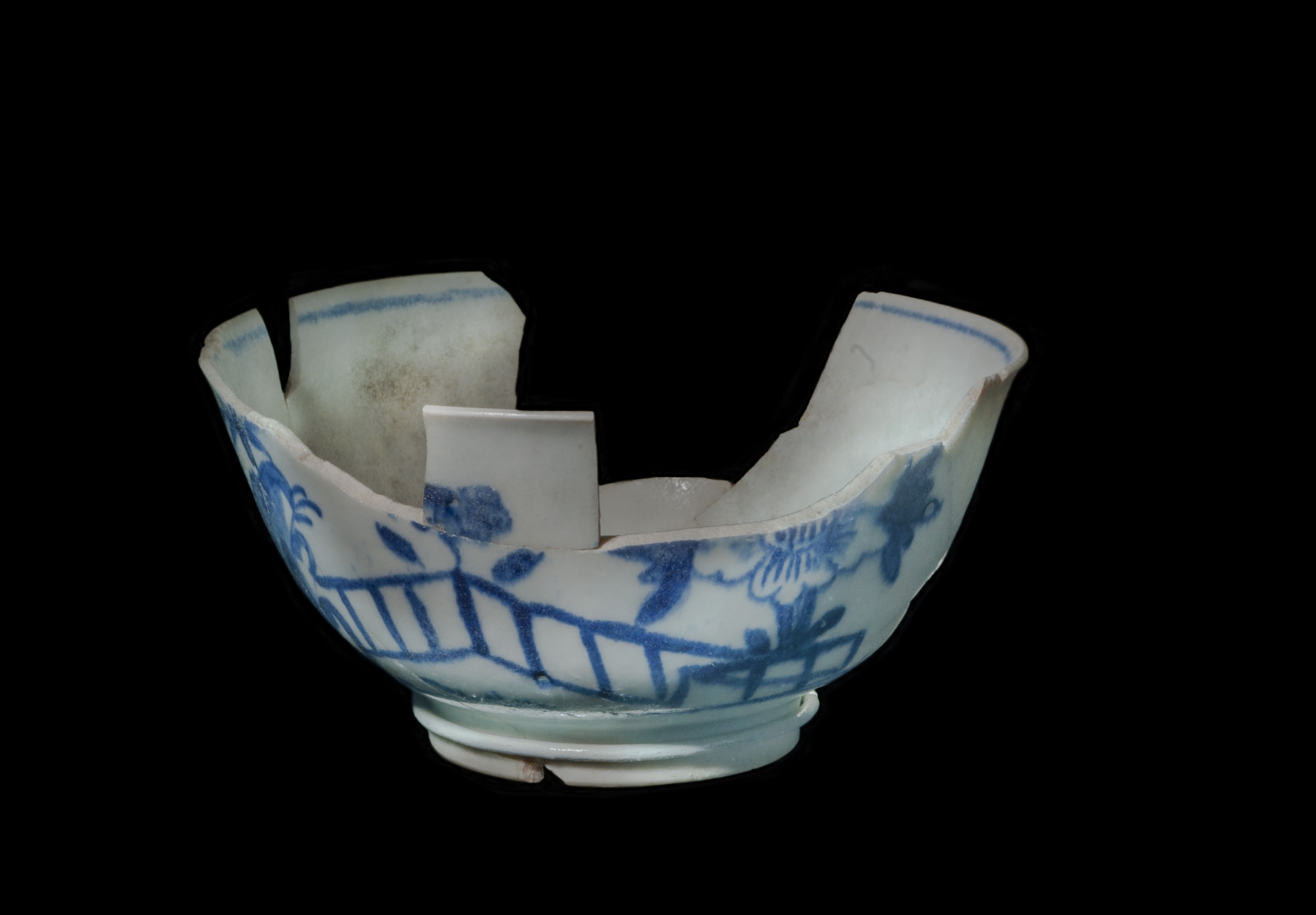Teacup
Artifact


Image
Video
Audio
 Activities
Activities
THINK
This teacup didn’t belong to Marie Marguerite Rose, but to her masters. Why do you think we have nothing belonging to Marie Marguerite Rose herself? Talk about this with a partner, and make a list of possible reasons.
THINK
We don’t know anything about Marie Marguerite Rose’s life before she was forced into slavery. How do you think she might have felt about being given a French name, and not being able to use her given name anymore?
Write a few sentences about this.
Additional Activity: Use historical evidence provided in this package as well as outside sources to support your ideas about Marie Marguerite Rose’s feelings.
Details
 Materials
Materials - Porcelain
Historical Context
Choose one of the three levels below to match your needs.
- This teacup recalls the life of an enslaved African woman, Marie Marguerite Rose, who worked in a home in New France.
- As a servant in a household with 12 children, Marie Marguerite Rose was kept very busy.
- There were many enslaved people in Canada at the time.
This teacup from the 1700s was found in a well on the property of Marie Marguerite Rose’s master, Chrysostome Loppinot.
As a household servant, Rose probably used this teacup in her daily tasks. The Loppinots had 12 children, and her days would have been filled with serving, mending, cooking and cleaning.
In the 1700s, there were over 1,330 enslaved people, like Marie Marguerite Rose, across Canada.
This teacup was made in the early 1700s. It was found in a well on the property of Marie Marguerite Rose’s master, Jean Chrysostome Loppinot.
It’s likely that Rose, as a household servant, used the cup in her daily tasks. She would have worked non-stop to meet the needs of the Loppinot family, with its 12 children.
During the 1700s, enslaved people numbered more than 1,330 and were a common sight across Canada. They spent their days serving, mending, cooking and cleaning.
- This teacup recalls the life of an enslaved African woman, Marie Marguerite Rose, who worked in a home in New France.
- As a servant in a household with 12 children, Marie Marguerite Rose was kept very busy.
- There were many enslaved people in Canada at the time.
This teacup from the 1700s was found in a well on the property of Marie Marguerite Rose’s master, Chrysostome Loppinot.
As a household servant, Rose probably used this teacup in her daily tasks. The Loppinots had 12 children, and her days would have been filled with serving, mending, cooking and cleaning.
In the 1700s, there were over 1,330 enslaved people, like Marie Marguerite Rose, across Canada.
This teacup was made in the early 1700s. It was found in a well on the property of Marie Marguerite Rose’s master, Jean Chrysostome Loppinot.
It’s likely that Rose, as a household servant, used the cup in her daily tasks. She would have worked non-stop to meet the needs of the Loppinot family, with its 12 children.
During the 1700s, enslaved people numbered more than 1,330 and were a common sight across Canada. They spent their days serving, mending, cooking and cleaning.
Summary
- This teacup recalls the life of an enslaved African woman, Marie Marguerite Rose, who worked in a home in New France.
- As a servant in a household with 12 children, Marie Marguerite Rose was kept very busy.
- There were many enslaved people in Canada at the time.
Essential
This teacup from the 1700s was found in a well on the property of Marie Marguerite Rose’s master, Chrysostome Loppinot.
As a household servant, Rose probably used this teacup in her daily tasks. The Loppinots had 12 children, and her days would have been filled with serving, mending, cooking and cleaning.
In the 1700s, there were over 1,330 enslaved people, like Marie Marguerite Rose, across Canada.
In-Depth
This teacup was made in the early 1700s. It was found in a well on the property of Marie Marguerite Rose’s master, Jean Chrysostome Loppinot.
It’s likely that Rose, as a household servant, used the cup in her daily tasks. She would have worked non-stop to meet the needs of the Loppinot family, with its 12 children.
During the 1700s, enslaved people numbered more than 1,330 and were a common sight across Canada. They spent their days serving, mending, cooking and cleaning.
